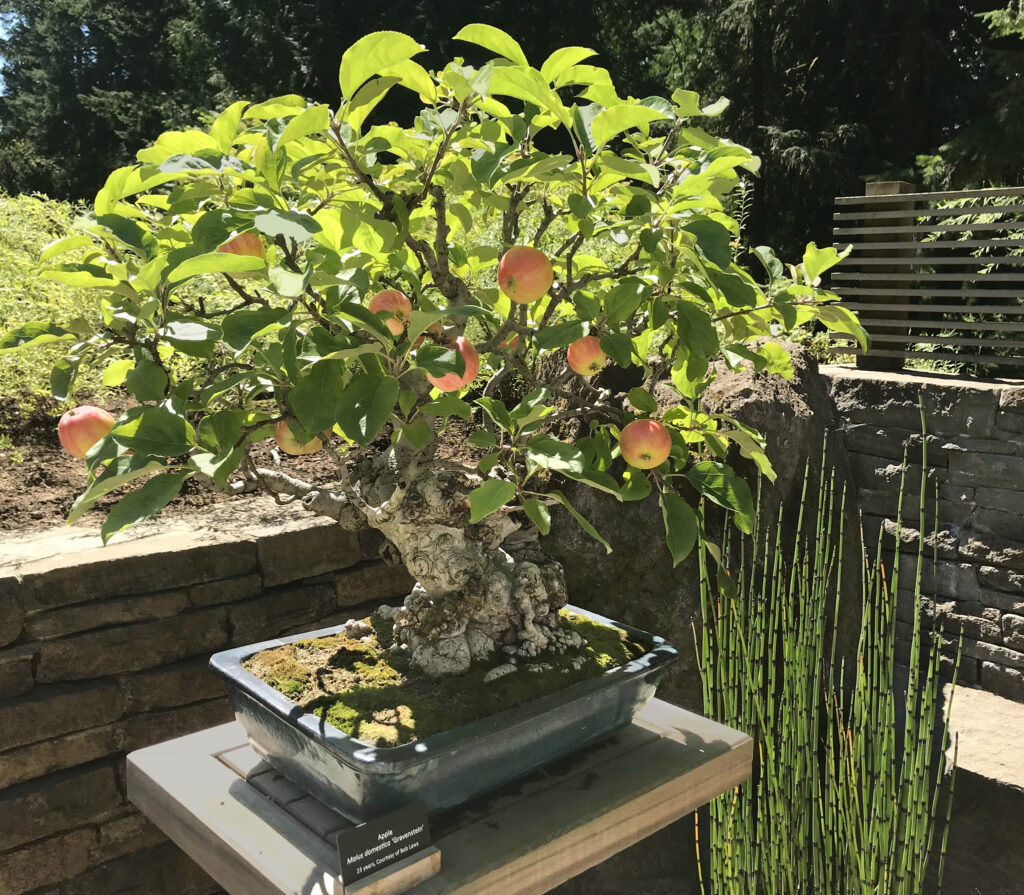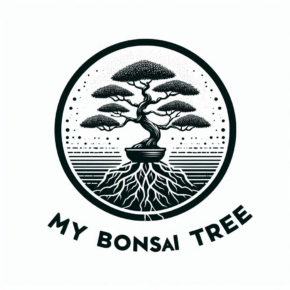
A. Davey © as displayed on Flickr (Licensed under CC BY 4.0)
While many enthusiasts are drawn to more traditional species like pines, junipers, or maples, creating a bonsai from an apple tree offers its own set of rewards and difficulties. In this post, we’ll explore the beneficial characteristics of using an apple tree for bonsai, as well as the challenges that come with nurturing this delicate yet fruit-bearing miniature marvel.
Beneficial Characteristics of Creating a Bonsai Apple Tree
Visual and Seasonal Appeal – One of the most compelling reasons to bonsai an apple tree is its seasonal beauty. Apple trees are deciduous, which means they go through distinct seasonal changes, adding year-round interest to your bonsai collection. In spring, delicate pink and white blossoms cover the branches, while in autumn, colorful apples hang gracefully. Even in winter, the bare branches of the tree offer a sculptural elegance.
Fruiting Potential – Many species used in bonsai are cultivated primarily for their foliage or bark textures. However, an apple bonsai rewards you with real, edible fruit! Watching your tiny tree produce fruit is both fascinating and satisfying. This fruiting capability sets apple trees apart from many traditional bonsai species and adds an extra layer of fulfillment to the process.
Adaptability – Apple trees are hardy and adaptable to different growing conditions, making them suitable for a wide range of environments. This resilience is beneficial for beginners who may not have the perfect conditions for growing more sensitive bonsai species. As long as the tree receives sufficient sunlight, water, and care, it can thrive.
Symbolism and Tradition – Apple trees have deep-rooted symbolism in many cultures, often representing knowledge, fertility, and abundance. Incorporating an apple tree into your bonsai collection allows you to bring a bit of this cultural heritage into your own garden, making the tree a conversation piece as well as a work of art.
Challenging Characteristics of Creating a Bonsai Apple Tree
Managing Growth and Pruning – Apple trees are fast-growing and vigorous, which can be both a blessing and a challenge. While their rapid growth means you can shape them more quickly, it also requires regular and precise pruning to maintain the desired bonsai size and aesthetic. Failure to prune effectively can result in an overgrown or misshapen tree, which takes away from the elegance of bonsai art.
Fruit Size and Weight – While the apples are charming, they can be a challenge in terms of weight. Apples are often full-size, which can put significant strain on the delicate branches of a bonsai, potentially causing breakage or distortion if not properly supported. Additionally, producing fruit requires a lot of energy from the tree, so careful management of nutrients and water is necessary to keep the tree healthy while allowing it to bear fruit.
Pest and Disease Vulnerability – Like full-sized apple trees, bonsai apple trees are prone to various pests and diseases, such as apple scab, aphids, and caterpillars. Because bonsai trees are more delicate and require precise care, managing these issues can be particularly challenging. A single pest outbreak can quickly cause significant damage to a small bonsai tree, so vigilance and preventive care are crucial.
Root Pruning Sensitivity – Apple trees have deep and extensive root systems in their natural form, but bonsai techniques require regular root pruning to maintain a compact size. Apple trees, especially young ones, can be sensitive to this root pruning. Overzealous trimming can result in poor health or stunted growth. Achieving the right balance in root maintenance while keeping the tree healthy is one of the more advanced aspects of caring for an apple bonsai.
Balancing Aesthetics and Functionality – Creating a visually appealing bonsai tree while allowing it to bear fruit requires careful planning and attention to detail. If the tree becomes too focused on fruit production, it may lose some of the characteristic elegance of a bonsai. Conversely, if the aesthetics are prioritized too much, the tree may not have the energy to produce fruit. Balancing these two aspects is an ongoing challenge.
Conclusion
Creating a bonsai apple tree is a rewarding endeavor for those willing to take on the unique challenges that come with it. The beauty of the flowers, the joy of watching apples grow, and the symbolism embedded in apple trees make it an exciting project for bonsai enthusiasts. However, maintaining the balance between aesthetics and functionality, managing growth, and combating pests require dedicated care and attention.
